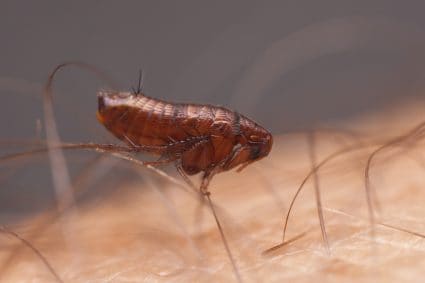
Flea and tick prevention is a crucial aspect of pet care, given the discomfort and health risks these pests pose. With numerous products available on the market, pet owners often face the dilemma of deciding what to use for flea and tick prevention. This comprehensive guide will provide you with detailed information on various methods, their effectiveness, and factors to consider when choosing a suitable product.
For flea and tick prevention, pet owners can use prescription treatments and over-the-counter products like topical treatments, oral tablets, shampoos, sprays, and collars. Natural remedies like plant and essential oil-based sprays are also available. Factors such as your pet’s age, breed, size, health status, and lifestyle should be considered while choosing a product. Always consult with your veterinarian before starting any flea and tick prevention program. Regular treatment is key for maximum protection.
Prescription Treatments and Over-the-Counter Products
Prescription treatments and over-the-counter products are often the first line of defense against fleas and ticks. These products come in different forms, including topical treatments, oral tablets, shampoos, sprays, and collars.
Topicals, like K9 Advantix II, Frontline Plus, and Advantage, are applied directly to the pet’s skin and work by killing adult fleas, larvae, and eggs. Oral medications, such as NexGard and Bravecto, are designed to be eaten and are a preferable option if your pet frequently gets wet, which can wash off topical treatments.
Shampoos and sprays provide immediate relief by killing fleas and ticks on contact, while collars like Seresto offer long-term protection, up to 8 months.
Natural Remedies
For pet owners who prefer natural alternatives, there are several safe and effective options. Natural Care+ Flea & Tick Home Spray uses plant extracts like peppermint oil and eugenol, while Flea Away is an oral treatment that uses essential oils to repel fleas, ticks, and mosquitoes. Other natural remedies include cedar oil, citronella oil, and homemade sprays using safe essential oils.
Factors to Consider
Choosing a flea and tick prevention method is not a one-size-fits-all decision. Factors such as your pet’s age, breed, size, health status, and lifestyle should be taken into account. Additionally, the application method and effectiveness of the product are important considerations. The presence of children and other pets in the household can also influence your decision.
Side Effects and Risks
While flea and tick prevention products are generally safe, they can sometimes cause side effects. These may include skin reactions, gastrointestinal upset, agitation, restlessness, and in rare cases, neurological issues like seizures. Always consult with your veterinarian before starting any flea and tick prevention program.
Treatment Frequency
Regular treatment is key to ensuring maximum protection against fleas and ticks. Most products are designed to be used monthly, but some offer longer protection. Always follow the specific instructions and treatment frequency for the product you choose.
Special Considerations
Certain breeds or types of pets require special consideration when it comes to flea and tick prevention. For instance, many flea treatments are not suitable for puppies younger than eight to 12 weeks. Similarly, certain breeds may react differently to treatments. Always consult with your veterinarian to choose the most suitable product.
In conclusion, flea and tick prevention is an essential part of pet care. With the multitude of options available, it’s crucial to choose a method that is safe and effective for your pet. Consult with your veterinarian, consider your pet’s specific needs, and remember to use the products as directed to ensure the best protection against these pesky pests.
Frequently Asked Questions
What is the best flea and tick prevention product for cats?
For cats, Frontline Plus and Advantage II are top-rated topical treatments. Seresto also makes a collar specifically for cats that offers up to 8 months of protection. Always consult with your veterinarian to choose the most suitable product for your cat.
Can I use dog flea and tick prevention products on my cat?
No, you should not use dog flea and tick prevention products on cats. These products can contain ingredients that are harmful to cats. Always use products that are specifically designed for the type of pet you have.
Are there any flea and tick prevention products that are safe for pregnant or nursing pets?
Yes, there are products safe for pregnant or nursing pets. However, it’s crucial to consult with your veterinarian before using any flea and tick prevention products on pregnant or nursing pets.
Can I use multiple flea and tick prevention methods at the same time?
While it’s possible to use multiple methods, it’s not typically recommended unless advised by a veterinarian. Using too many products at once can increase the likelihood of side effects or even cause an overdose.
How can I prevent my pet from getting fleas and ticks in the first place?
Regular use of flea and tick prevention products is the best way to protect your pet. Additionally, you can minimize exposure by regularly cleaning and vacuuming your home, washing your pet’s bedding often, and avoiding high-risk areas like tall grasses and wooded areas.











